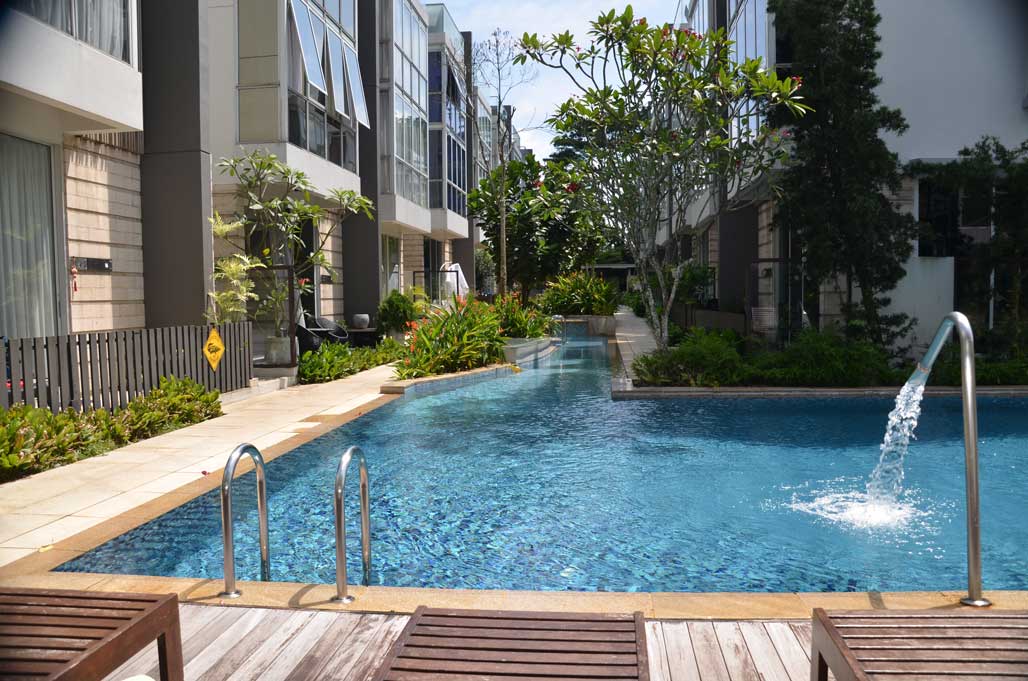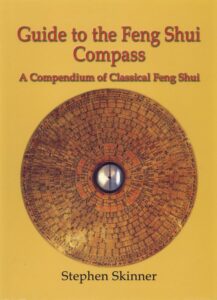As our population demographic shifts towards an urban environment, the need for high density family homes continues to grow. Hence the design and integration of external communal leisure areas with internal private living spaces is even more important in order to create a residential oasis that not only enhances human health and harmony, but stimulates the wealth and career potential of its occupants.
In this article I examine a townhouse development near Upper Thomson Dam in Singapore which combines the ancient schools of Landform, Compass and Flying Star Feng Shui into a modern, 21st century living solution.
SPONSORED
Dalla Vale is a semi-detached cluster development nestled in a secure enclave, amidst lush and tranquil surroundings. It offers 60 stylish homes with four spacious bedrooms spread over five floors of internal living space, plus a range of shared resort facilities including a swimming pool, jacuzzi and gymnasium.
The site itself lies along an East/West axis with a river located to the North and woodland to the East. According to Compass Feng Shui these natural landforms align with their respective directions, as North (Kan) relates to the Water element and East (Chen) to the Wood element.
Whilst such inherent support is not always as readily available, we can certainly still modify the surrounding environment to ensure our homes enjoy auspicious ch’i.
Dalla Vale’s main entrance is located at the end of a long, straight road which effectively creates a poison arrow or sha ch’i. Metal gates at the main entrance provide an initial response to the poison arrow of the long road by manipulating and slowing ch’i.
A Ming Tang inside the main entrance then allows ch’i to settle before a curved driveway circulates it to the rear of the site and down a ramp to the individual, underground townhouse entries.
Water is another important feature of Feng Shui practice as it slows down and attracts ch’i and here it is skillfully used to great effect.
A vertical water feature on the Dragon side of the Ming Tang occupies a sunny, open, Yang position and this active, moving water attracts vital ch’i. A second water feature on the Tiger side occupies a shady, quiet, Yin position where the gentle, circulating water of the pond helps to settle ch’i.
The main entrance falls into the West (Tui), which belongs to Metal element. Not only are the gates constructed from metal, but seven large, circular metal discs of different heights provide a unique sculptural interest which further enhances the inherent Metal energy of the West. The circular shape of the discs also reference the Metal element and symbolize wealth, as they are shaped like coins.
The rear of the site is located in the East (Chen) with tall growing bamboo planted along the fence line. This provides landform support (Tortoise) and helps to retain ch’i within the site. Bamboo also enhances the inherent Wood element of the East and symbolizes good health and longevity.
Looking more closely at the site layout, we see that a long, straight corridor also exists between each row of townhouses and this directs poison arrows or sha ch’i toward the ground floor entries and living spaces of the end row of dwellings. This in turn can have a detrimental effect on those people living there.
So how has this situation been addressed? Thoughtful landscaping combines winding, discontinued half-moon paths with a textured, pebble finish and mass plantings to manipulate and slow down the flow of ch’i between the outer rows of townhouses; whilst more garden beds and a sinuous swimming pool meander along the central corridor.
In this case water is also used to attract positive energy to the ground level entry points, as well as ensuring that ch’i remains both gentle and beneficial.
Therefore clever landscaping not only provides an effective solution for these long, straight corridors, but creates attractive outdoor spaces which connect with the internal living areas and encourages residents to venture outside to relax with their family or socialize with neighbors.
Water is skillfully utilized once again with a raised square (Earth shaped) pond providing an additional boundary of protection for some of the end townhouses. Wood element in the form of timber decking and a row of flowering ginger plants is also used as a ‘buffer’ between the pond and townhouses, as too much water can overwhelm a household and contribute to problems such as floods or health issues related to the kidney, reproductive organs, bladder and hearing.
Auspicious symbolism creates another level of subtle, positive energy throughout the site in the selection of trees and flowering plants. Not only is Bamboo growing along the rear fence line, but miniature Pine trees are planted beside the pool, which once again symbolizes good health and longevity.
Furthermore all the shrubs and plants around the site flower in various Fire and Earth shades of red, orange, pink and yellow, which is of course associated with wealth and prosperity.
From a Flying Star perspective, the news is also good as a lo’pan reading reveals that these Period 8 townhouses face South West 3 (申 Shen), North East 3 (寅 Yin) and North West 3 (亥 Hai).
South West 3 and North East 3 are both classified as Shang Shan Hsia or Reverse Charts which translates as ‘up the mountain and down the river’. This means that the timely Mountain Star appears in the Facing Palace and the timely Water Star appears in the Sitting Palace.
Often this configuration results in health and financial issues for the occupants, but if the house faces a ‘mountain’ and is backed by ‘water’ then it can still bring good fortune.
Once again we see that the external landforms have been thoughtfully and skillfully arranged so they are supportive of the internal Flying Star energies. As such the townhouses provide ‘mountain’ support for each other, whilst the long pool brings real water to the front of the central row of townhouses and an open space between the outer row of townhouses brings ‘virtual water’ to the front of these dwellings.
Thus these rows of South West/North East oriented townhouses receive the ‘mountain’ and ‘water’ support they need in order to bring good fortune to their occupants.
But there is something else that makes these particular Period 8 Flying Star Charts extra special. They are Parent String or Combination of Three Charts,which means that every Palace has either 1-4-7, 2-5-8 or 3-6-9. This is a very powerful and beneficial configuration which essentially links all three Eras (Lower, Middle and Upper) together.
Furthermore as each number belongs to Heaven, Earth or Man it not only magnifies the luck of the chart by a factor of three, it also over-rules any unfortunate aspects of the Reverse Chart and holds onto its many benefits across all three Eras. Hence it has the potential to manifest good health, great fortune, fame, respect, familial harmony and respectful descendants for many generations and who wouldn’t want that!
The final row of townhouses faces North West 3, which is classified as a Wang Shan Wang Shui or On Mountain and On Water Chart. This translates as ‘flourishing mountain and flourishing water’ which means that the timely Water Star appears in the Facing Palace and the timely Mountain Star appears in the Sitting Palace; hence bringing both human harmony and good fortune to the home’s occupants.
Yet again we see that the external landforms are supportive of the internal Flying Star energies, as these townhouses face real water and back onto a mountain. Either a pond or swimming pool is located at the front of this row of dwellings, which visually links to the internal Water Star 8 to activate the financial prosperity of the occupants.
Natural elevation and multi-story dwellings provide good Tortoise support at the rear which enhances the internal Mountain Star 8 and therefore the health, relationships and careers of the occupants.
So as a consultant I suppose that the most important things to take on board from this case study are:
- Before you take out your lo’pan put on your Feng Shui eyes and take a good look at the surrounding environment
- Google Earth is never a replacement for a site-visit, but it is a useful tool which provides you with an initial birds-eye view
- Check out the flow of ch’i to the site and around the site: Is it beneficial? Can the property receive and retain ch’i?
- Utilize Landform and Compass school principles when assessing or arranging external features such as gardens, paths and water features
- Ensure that the placement of Water and Mountain Forms complement the internal Flying Stars ie. A good Flying Star Chart should be supported by the appropriate external environment
- Include auspicious symbolism, as this can be another subtle way to raise the energy level via positive association
- Finally look inside at the internal arrangement of space and match the occupants to the best house using their Kua Number, Bazi and lifestyle requirements
Reference: This article was originally published in the Feng Shui Journal Volume 3 in August 2019; it is now republished here on FSML with the authors permission for everyone to enjoy.

SPONSORED





